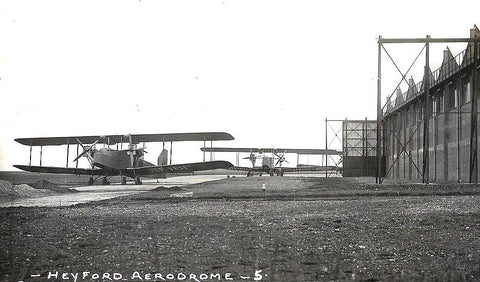My shopping cart
Your cart is currently empty.
Continue ShoppingConservation Resources now calls Upper Heyford, Oxfordshire, home.

Established as an airfield in 1918, Upper Heyford was the formation site of Canadian Air Force before the Royal Air Force arrived in 1928. Then a bomber station, the site was expanded to house Handley Page Hyderabad bombers. Large "A-type" hangars were constructed across the site, including the building now occupied by Conservation Resources.

On the outbreak of war in 1939, Upper Heyford became a training station for Bomber Command. It provided aircraft for leaflet dropping and the first 1,000 Bomber Raids.
As a result of the Cold War in 1951, the USAF took over Upper Heyford. Supporting East-Anglian based bombers, Heyford tankers were joined by Strategic Air Command nuclear-capable bomber units. The facilities were re-developed and re-secured to accommodate large USAF aircraft.
Boeing B-47 jet bombers were deployed from Upper Heyford from 1953 to 1965. In order to respond to Soviet aggression, they were poised ready to take off in 15 minutes if required.
From 1966 to 1970 the 66th Tactical Reconnaissance Wing was resident. The 20th Tactical Fighter Wing then arrived in 1970. Their F-111 fighters could fly low-level strike and attack missions in all weather conditions, day or night, at supersonic speeds.
By the mid-1980s the 42nd Electronic Countermeasures Squadron became resident. Their role was to ‘jam’ hostile radar systems. In 1986 aircraft from this division took part in the bombing raid on Tripoli, Libya.
Upper Heyford aircraft were deployed to Turkey and Saudi Arabia from 1990 to 1992 in support of Gulf War operations against Iraq.
The end of the Cold War in 1989 the US Air Force withdrew from RAF Upper Heyford. The Ministry of Defence disposed of RAF Upper Heyford in 1994.
The site is now owned and under development by the Dorchester Group as Heyford Park. It has been surveyed and recorded by English Heritage. As a result, a number of the buildings are now scheduled monuments.
As well as being home to a thriving business community, including Conservation Resources, Heyford Park is now regularly used as a filming location for television and cinema.
